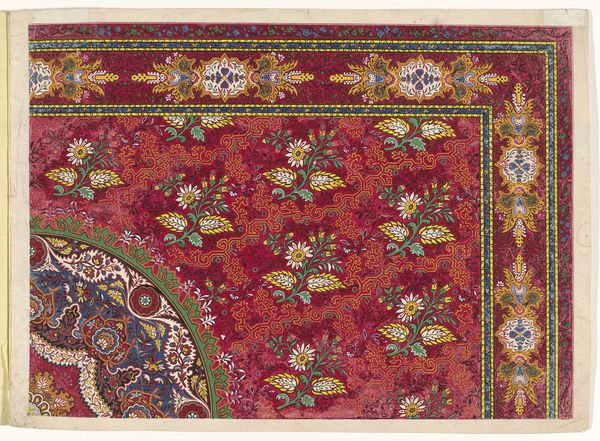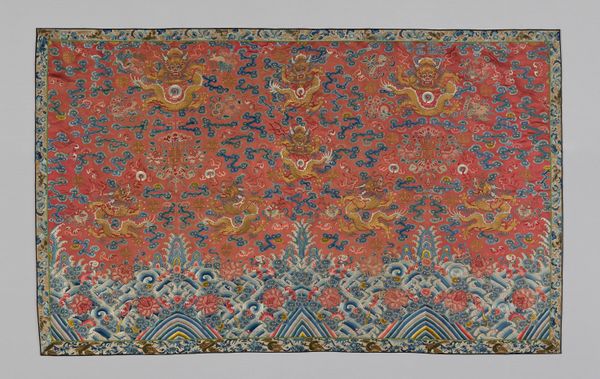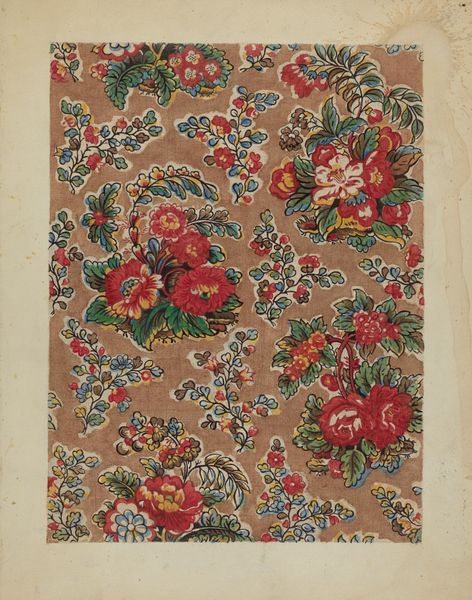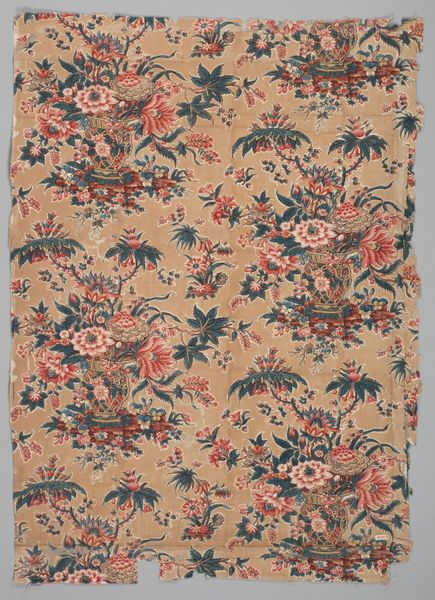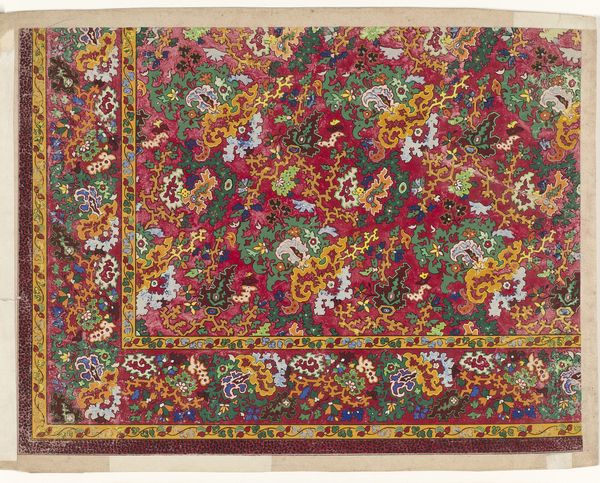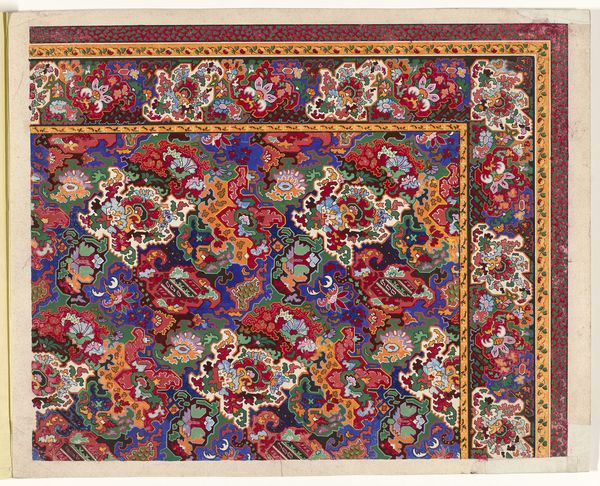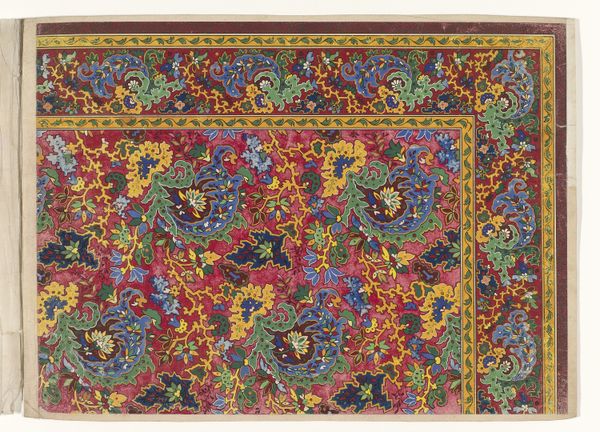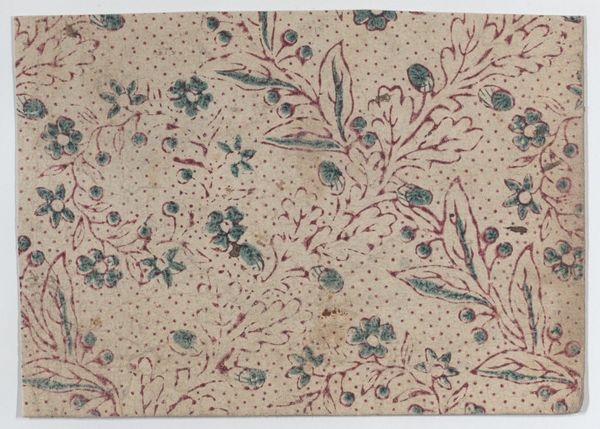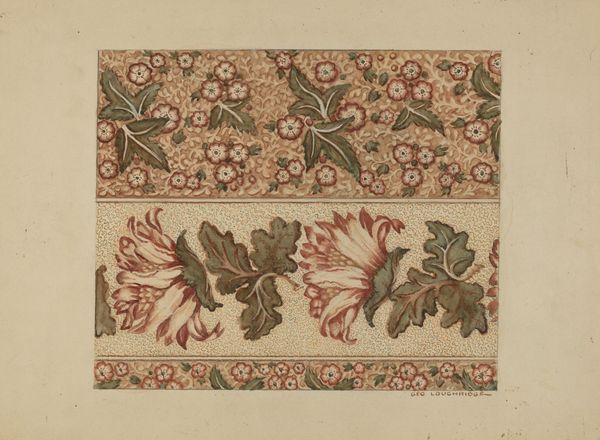
fibre-art, print, weaving, textile, sculpture
#
fibre-art
# print
#
pattern
#
weaving
#
textile
#
flower
#
text
#
pattern background
#
tile art
#
organic pattern
#
sculpture
#
romanticism
#
decorative-art
#
watercolor
Dimensions: L. 17 1/2 x W. 29 inches 44.5 x 73.7 cm
Copyright: Public Domain
Editor: So, this piece, titled simply "Piece," dates from between 1813 and 1823. It's currently at the Metropolitan Museum of Art, and it appears to be a textile, perhaps a weaving or print, covered in floral designs. The colors are somewhat muted. What jumps out at you about it? Curator: I’m struck by the layering of processes at play here. We see printed design, suggesting a degree of mechanization, combined with textile work, which, even at this time, often relied on hand labor. How does that tension between the industrial and the handcrafted influence the way we value this object? Editor: That's a great point. I hadn't really considered the production process beyond just admiring the finished design. It does make you wonder about the status of textile workers and how their labor intersects with the burgeoning industrial era. Curator: Exactly. Consider also the floral patterns themselves. These aren't simply aesthetic choices; they're products of a complex system of resource extraction, trade routes, and cultural exchange. The pigments, the dyes—where did they come from, and what conditions were required to produce them? The availability of specific colors or patterns likely reflected power dynamics and colonial influences. Editor: So the flowers aren't just flowers; they're markers of trade and colonial power. Did people at the time even consider that? Curator: Some undoubtedly did. Remember, there were active debates about the morality of trade and the ethics of labor practices even then. Perhaps owning or displaying this “Piece” carried social connotations or sparked conversations about these very issues. It would depend on the original owner and how it was used, no? Editor: That's really changed how I see it. It's no longer just a pretty pattern, but almost like a document of its time. Curator: Precisely. By focusing on its materiality and production, we unlock a whole new layer of meaning, connecting this "Piece" to broader social and economic forces. Editor: Absolutely! It makes you appreciate the work that goes into creating art and how deeply interwoven art is with the cultural landscape.
Comments
No comments
Be the first to comment and join the conversation on the ultimate creative platform.

